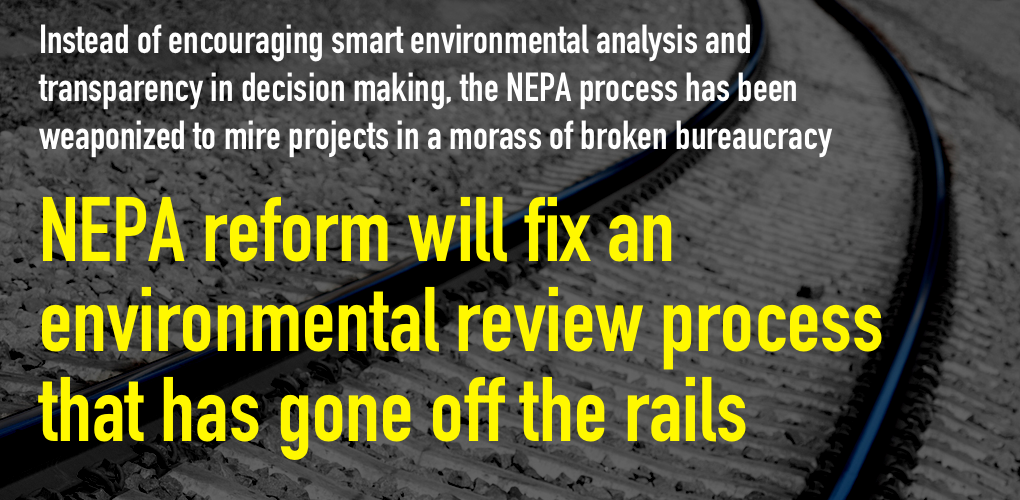
An Update 40 Years in the Making
Almost untouched since its inception in the late 1970s, the National Environmental Policy Act (NEPA) is finally getting a desperately needed update. Over the years, NEPA has become an albatross around the necks of infrastructure and energy projects of all stripes. Instead of encouraging smart environmental analysis and transparency in decision making, it has been weaponized by obstructionists to mire one project after another in a morass of broken bureaucracy.
Fortunately, the Trump administration has announced much-needed reform to improve the efficiency of an environmental review process that has gone off the rails.
Praising the announcement, NMA’s president and CEO Rich Nolan said, “The mining industry is all too familiar with the project delays and escalating costs associated with NEPA compliance. Our permitting process is broken, and NEPA’s historical problems play a big part in the unnecessary obstacles standing in the way of the responsible use of our natural resources. Today’s action is a concrete step in the right direction.”
While it may seem obvious, it should not take years to review an environmental impact statement and make a decision about the future of a proposed project, be that a new bridge or highway, or coal export terminal or mine.
In 1981, the Council on Environmental Quality (CEQ) provided guidance that federal agencies should review environmental impact statements, even the most complex, in a year or less. Today, according to CEQ, those reviews are on average taking four and a half years. And that’s the average. Review is often taking even longer with too many projects finding their reviews dragging a decade or more.
While government can and should move faster, part of the challenge has been the ever-expanding scope of review. Environmental Impact Statements (EIS), initially intended to be 150 pages, have stretched to 600 or more. For some complex projects, those statements are several thousand pages long. As the Department of Interior’s Casey Hammond recently said, when you have an EIS that exceeds 1,000 pages that has typically meant “no one was reading the document except for the lawyers that really litigate on it.” Companies and bureaucrats are drowning in an exercise that has lost its focus on transparency and environmental protection and replaced it with process and red tape seemingly birthed from a Soviet Commissar’s wildest fantasies.
The cumulative effect of these broken NEPA processes has been unreasonable costs, ever-longer delays and an unnecessary drag on our economy. The woeful state of the nation’s infrastructure owes much to a process that has become a primary impediment to upgrades and improvements.
The long-awaited update to NEPA is comprehensive, including new page and time limits on reviews as well as better coordination and synchronization between the multiple agencies involved in reviewing proposed projects. Redundancy and foot dragging are being replaced with commonsense reform that promises a more efficient and transparent review process that emphasizes better input from the stakeholders on the ground that know proposed projects best. Improved efficiency isn’t compromising environmental stewardship, it’s reinforcing it. A better, more efficient NEPA is firmly in every American’s best interest.
- On January 9, 2020
